I’m working on a new post, but meanwhile I thought I’d share some glimpses from the past few weeks:
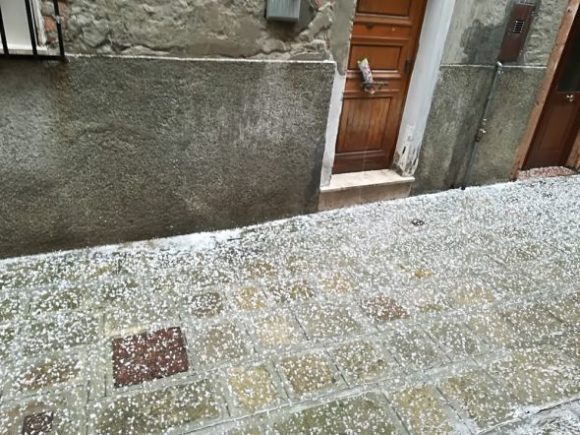
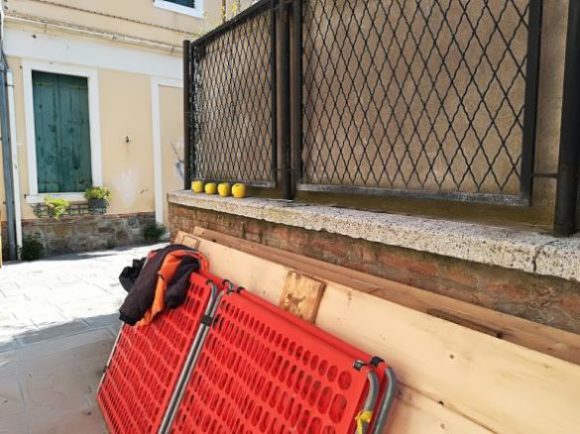
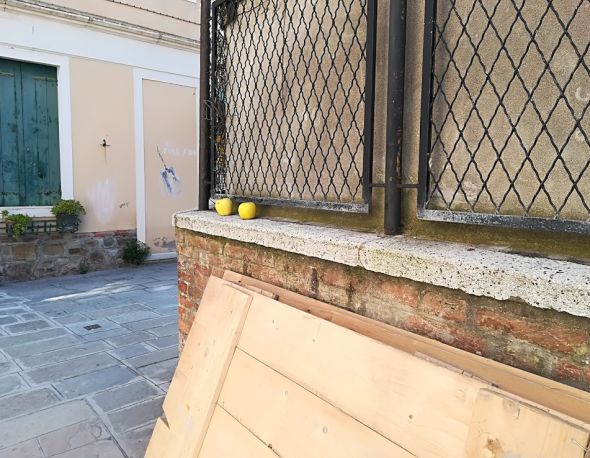
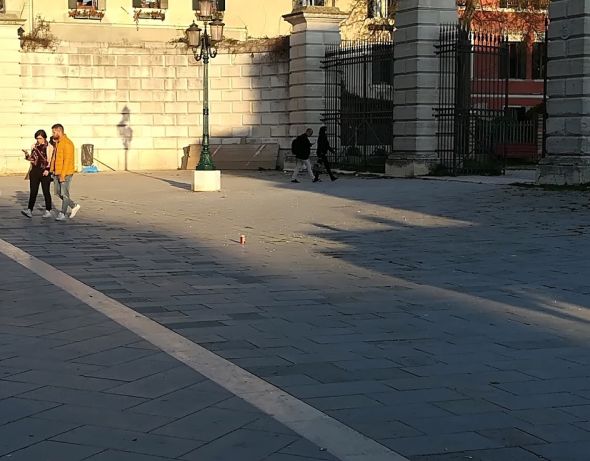
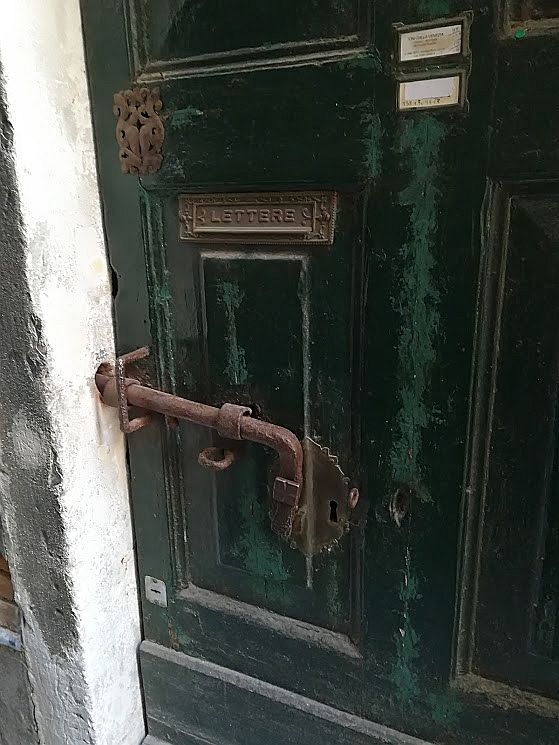
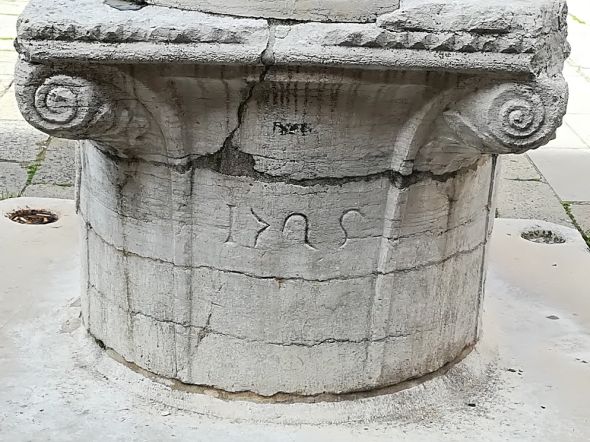
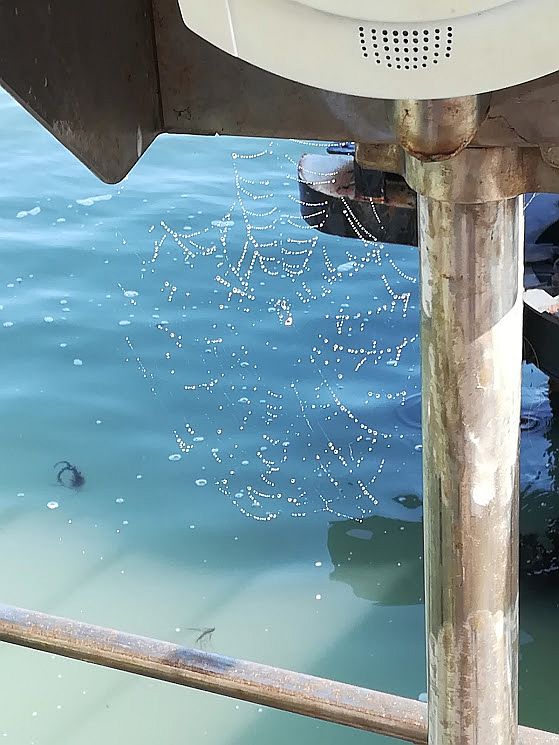
I’m working on a new post, but meanwhile I thought I’d share some glimpses from the past few weeks:







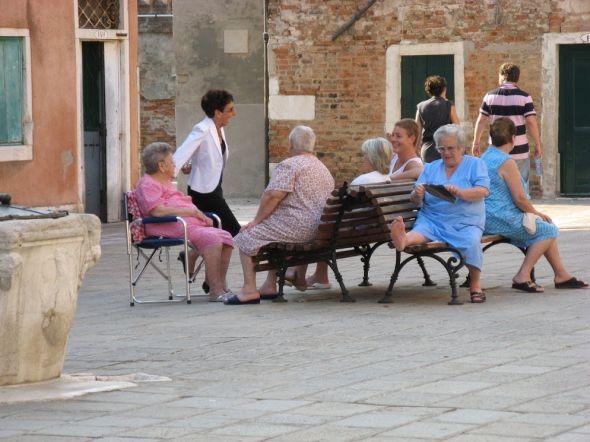
There are so many aspects to life in Venice — past, present, future — that it can be pretty challenging to separate what used to be true, what isn’t so true anymore, what we wish were true but never was… We, including the undersigned, so often want our fantasies about this amazing place to be reality, but one of those fantasies hit a wall a few days ago and disintegrated forever.
The “wall” was the house on the Calle del Cristo in the Santa Marta zone, and the fantasy — one of our very favorites — was that everybody in this very small town knows each other and keeps up with each other and knows what time you put on your socks every Saturday morning and what your spouse did to the teacher the day before Christmas vacation in second grade.
But everybody doesn’t notice everybody else anymore, and as the number of residents continues to drop the links of acquaintance weaken and break. (Ignore mixed metaphor.) People move away, people go into the hospital or nursing home and are never heard of again, relatives are who knows where, children grow up and leave. The people who are left don’t sit outside so much anymore, they tend to sit inside and watch TV.
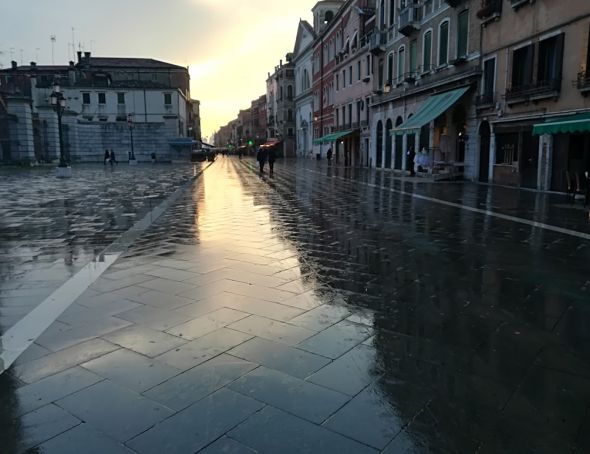
So what happened? On that unremarkable calle a man lived, died, and lay on his bed for seven years, surrounded by trash and old food and foraging rats, until last Saturday night a random burglar broke in, discovered the mummy that once was the man, and left the door open as he fled in terror. On Sunday a neighbor noticed the open door, peeked inside with his flashlight, and in two shakes the Carabinieri were there and on the case. So were the reporters, and the story has stunned readers in many different ways. How could this happen?
Setting aside the admittedly sensational aspects of the event, the most important thing isn’t that he was A MUMMY. It’s that he was a person who died alone and nobody knew it, not even his sister who lives on the Lido. (We’ll get back to that.) Seven years’ worth of bills lying on the floor; seven years of his bank account accumulating his monthly pension with no withdrawals since September 2011; seven years of the utilities having been shut off with not even a squeak of protest in response. “Hey, you turned off the lights/heat/water! I’m freezing!” And nobody noticed.
True, the shutters were always closed, the house number 2216 flaked away, the mailbox broken, the name on the doorbell illegible, all signs that would lead one to assume there was nobody inside.
In 2011 the city conducted a census and never received the completed questionnaire from him. After various bureaucratic cross-checks, in 2013 a city employee was sent to investigate, but no one answered the doorbell, and so he was eliminated from the database of the Office of Vital Statistics. Forgotten, but not, in fact, gone.

His name was Lelio Baschetti; he was born in Rimini in 1943. He graduated with a degree in astronomy, but went on to teach mathematics and some science subjects at the state high school “Duca degli Abruzzi” in Treviso. He moved to Venice at the end of the Nineties to teach at the Liceo Artistico not far from the Accademia Gallery.
Baschetti was shy, introverted, a solitary unmarried man who loved to paint evanescent scenes in pale pastel tones and whose pictures were exhibited in 2000 in the Benvenuti gallery at San Marco.
“That was a little unusual at our school,” commented the vice-principal of the Liceo, “an instructor of mathematics who painted. Usually it’s the art professors who paint and exhibit. Perhaps his paintings helped him to communicate, to overcome his nature. I went to see his show and I remember he was so happy that I was interested, he really appreciated it. He wasn’t difficult or peevish, but closed, turned in on himself.”
His solitude intensified. His students remembered that when school started in the fall he would say “Excuse me if I struggle to speak, but I haven’t talked with anybody all summer.”
“He was a thin man of medium height, a little hunchbacked,” recalled a school custodian; “I don’t know how he was in class, but certainly he was a very introverted person, silent. He didn’t answer me when I said hello and so after a little while I just stopped.”
“He was polite, but reserved,” recalled the vice-principal. “He was a man who had put a wall between himself and others. As a teacher he was neither too strict nor too soft, we never had any complaints about him from anyone.” Now, 15 years after he retired, hardly anyone is left who ever knew him.
“Perhaps the choice of teaching mathematics at the artistic high school was because he felt himself to be an artist,” mused an architect who knew him since 1975 at Treviso and later in Venice. “I remember I once complimented him on a painting and he looked at me as if I’d offended him. But when he was at Treviso he was very likeable, even though he was always a little ‘orso’ (bear) as they say here, but not as much as he became in Venice. When I ran across him later he had become very closed.” When his colleagues thought about organizing a retirement party for him, with a cake and toasts, he took it in very bad spirit and simply left.

Baschetti lived for many years with his sister and mother on the Lido, but when his mother passed away ten years ago he bought a two-level house of about 60 square meters (645 square feet) at Santa Marta and moved away. Perhaps there was some sort of falling-out. The sister has not confided in the Gazzettino.
He lived frugally and quietly, unhindered by intrusive neighbors because most of the inhabitants nearby are students at the nearby University of Architecture and the faculty of Environmental Sciences of Ca’ Foscari, the University of Venice, and students continually come and go. Also, as is so often the case now, many of the dwellings in his street were empty, so it wasn’t until three months ago that a student moved in to the house next door, someone who might have noticed him (or at least a terrible odor) if he hadn’t already long since departed. No friends, no Christmas or Easter or birthday phone calls from anybody. He just disappeared.
His sister and her husband heard about his death from the Carabinieri. The specific cause of death has yet to be determined. What is also being determined is the inheritance. His bank account contained some 80,000 euros of his pension which will probably be returned to the state, but he also had a savings account of some 100,000 euros. And there is the house, which once it’s fixed up ought to be worth a comfortable sum. If no other relative is located, all that will go to the sister, of course. That’s too ironic for me.
But it turns out that grown-up Lelio wasn’t the only one there ever was. Some of his boyhood friends remember someone who was very different, and they wrote a letter to the Gazzettino (translated by me):
“The beautiful youth of Prof. Baschetti:
We are writing in the name of numerous friends: We knew Prof. Lelio Baschetti in our and his youth and it’s right and fitting in this moment of sadness to give a portrait of the man in all of his facets. Lelio was a studious boy, cultured: the Seventies in Padova saw him a passionate student of physics, a kind and friendly classmate.
“We were part of the same group of young university students from Venice and the Lido. We want to remember his cheerfulness, the summer days we spent at the beach on the Lido, the evenings in the pizzeria, always ready for jokes and fun, but also in discussions and deep analysis. How can we forget the parties at the Circolo Ufficiali (Officers’ Club) of Venice, the New Year’s Eves: tireless dancer, and carefree companion.
Life has carried us all elsewhere, and sometimes far away, it has changed us and changed him, but this is the Lelio that we remember. We thank you if you want to publish this memory.”
When all the excitement is over, I hope that that is how he will be remembered. And not as a mummy.

Yes, there has been more than one aqueduct. There is the current one, which was inaugurated in 1884 and is still functioning with 30 percent of its original cast iron pipes. And there was the first one, begun in 1425 and working until 1884. This is the one that in my opinion deserves our astonishment and admiration, seeing that the duct for the aqua was boats, buckets and men.
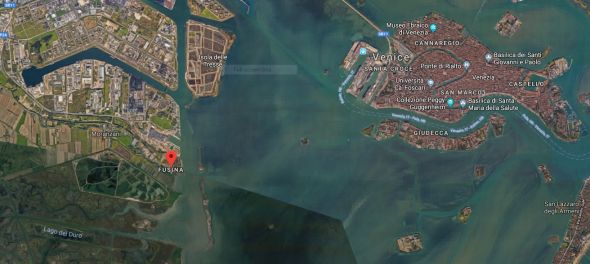

First, some background: At the beginning of the 14th century, Venice was one of the most populous cities in Europe, with some 200,000 inhabitants. Which meant that when the plague struck in 1348, there were plenty of victims. On the positive side, this reduction of thirsty mouths meant that the survivors now had plenty of water on hand in the wells. On the negative side, a comprehensible terror of contamination had set in which made people reluctant to use them. Supplementary water had been brought for years from nearby rivers but now that, too, had become suspect.
You may have noticed that Venetians were not, generally speaking, an easily daunted people. They built palaces on mudflats awash in brackish tides, to take an example at random. So a problem presented itself: Need more fresh water. A solution was born: Pick one river, keep it clean, harvest the water and bring it from there to the city.
That decision made, in 1425 the health department decreed that the Brenta would be the only river to be used for drinking water. (Among its many fine points was its nearness to the city.) Laws and regulations were enacted to protect its purity, and a system devised by which river water was loaded onto boats that were rowed, of course, or sailed, if possible, to Venice; there the water was transferred into smaller boats and then finally into the wells, public and private. (Not directly into the wells, of course, but down the gatoli so that the water would benefit from the same filtering process as rainwater.) After which it was paid for, naturally. This is Venice, where money is king.
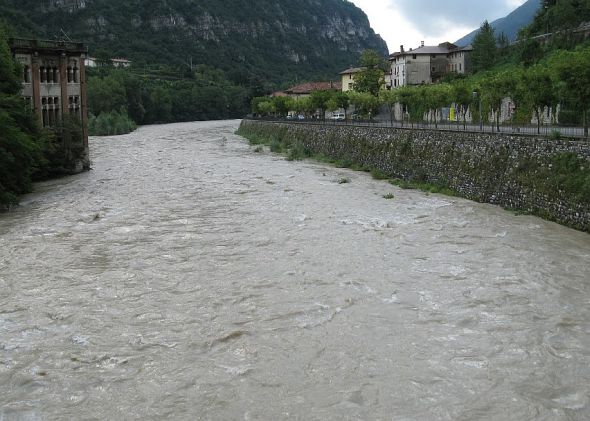
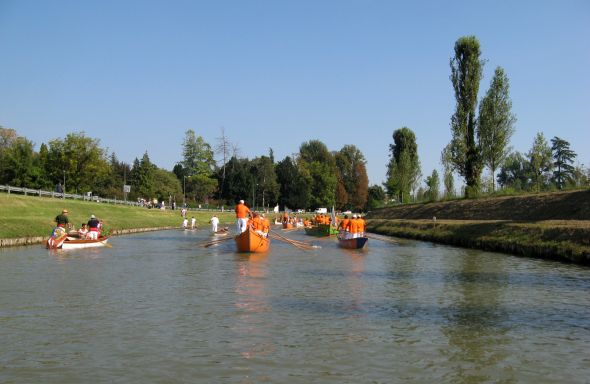
And so the acquaroli (acquaioli in Venetian) or watermen, once minor figures in the drama of Venetian water supply, became lead players, and formed their own guild in 1471. They rowed (I keep stressing that, but they also sailed) thousands of liters of water to Venice in enormous cargo boats still called burci (singular: burcio). If they carried only water, it was poured into the burcio itself, indubitably into compartments; if any enterprising acquaroli used their boat on off days to haul garbage away, they were required to carry the water in specially designed tubs. (As if that needed to be specified?)
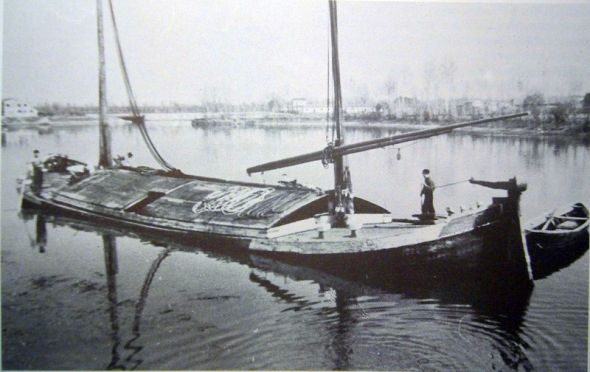
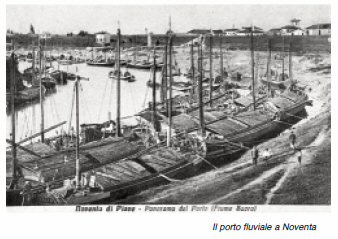
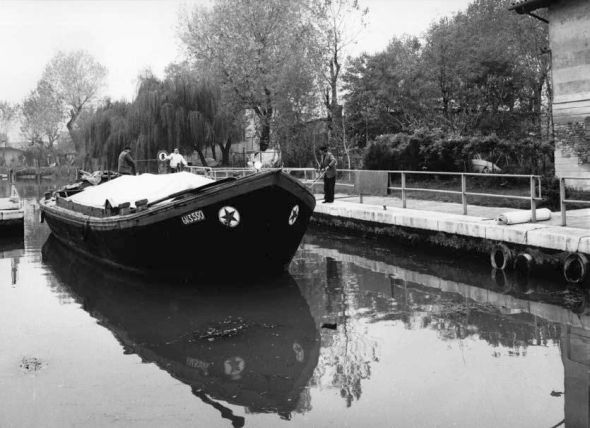
Given the importance of their cargo, the guild of the acquaroli was overseen by not one, but several government agencies: The “Giustizieri Vechi,” “Provedadori sora la Giustizia Vechia,” “Magistrato a la Sanità” (health) and “Colegio a la Milizia da Mar.” The men were also required to make various payments to the noble families which had been granted the concession to maintain what became an impressive industrial complex.
The acquaroli had to keep a sharp eye on their product, because there were laws forbidding the use of public water for private gain. There were many water-intensive crafts in Venice — dyeing, wool-washing, laundry-washing, glass-making, to pick a few, and they were required to buy their own water. The acquaroli were authorized to stand guard on the public wells to make sure any private entrepreneurs didn’t treacherously attempt to steal the water for which the city had paid. They watched the wells out of the goodness of their hearts? Not really. Water in the public wells was paid at a lower rate than the private wells, so the acquaroli had a vested interest in making sure the cheap water wasn’t being removed by the expensive-water customers.
There was also a subset of some additional 100 acquaroli who didn’t belong to the guild. They were illegal but that didn’t bother anybody; they had their own waterboats and were permitted, for an annual fee of 20 soldi paid to the guild, to sell their water retail to any customer standing there with a bucket or pot.
When the burcio arrived at its established destination in the city, the water would be offloaded onto smaller boats which were then rowed to whatever wells were on the schedule to be filled that day.

How the water got to Venice is one thing, but how the water got to the burci is an even more impressive tale.
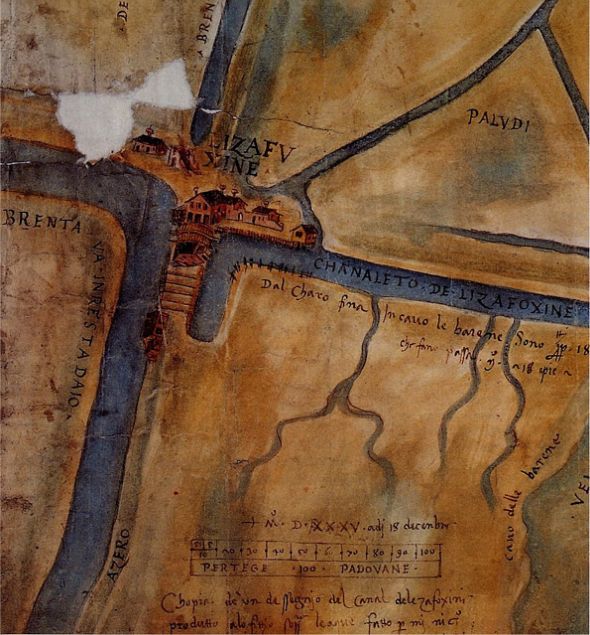



The system itself worked well, but by the early 1600’s the Venetian government had to admit that despite efforts to ensure its potability, the water from the Brenta was not always of the most limpid. So Cristoforo Sabbadino, a hydraulic engineer, was engaged as the head of a team to build a better system. (Let it be noted that the idea was totally his, and he’d been proposing it for years before the government finally agreed to undertake the project.)
Between 1609 and 1611 Sabbadino cut a channel, the “Seriola,” from the Brenta upriver at Dolo. This was now to be the official drinking-water supply for Venice and was so marked at that point by a marble tablet inscribed “HINC URBIS POTUS (“this is the potable water for the city”). The Seriola was 13.5 km long and one meter wide (8.3 miles and 3.2 feet), and brought the water downstream to the lagoon edge at Moranzani, having been passed through a series of filtering tanks. The Seriola’s quality was overseen by the Savi Esecutori alle Acque, and anyone caught besmirching its crystal depths was subject to heavy fines.

Here is the scheme for the Seriola:

So the water flows down the Seriola until it nears the lagoon’s edge.

Trust me, this post contains only the most minuscule part of the water-management system devised and maintained by the Venetians, and if I had time I’d have read more and basically kept the story going indefinitely. But anyone who might be even momentarily tempted to consider the construction of MOSE something impressive should pause to reflect on what was involved in moving all these rivers around. Which had become something of a Venetian specialty; in the same period (1600-1604) they also cut the Po River at Porto Viro and detoured it in a similar way to avoid imminent silting-up of the lagoon near Chioggia. The Po is the largest river in Italy. But as I may have mentioned, the Venetians were virtually impossible to daunt.
Let’s return to the subject of the public water supply. Even with thousands of rain-collecting wells in the city, Venice needed more water. (Bear in mind that in the 1600’s Venice had some 200,000 inhabitants). And they were thirsty, needed to wash their clothes, needed to dye their wool and silk, and so on.
I do not know how many artesian wells have ever been drilled here, so please do not ask me. But they were precious, obviously, especially when there was a drought. Or when bombs began to fall in the 20th century, threatening the aqueduct.
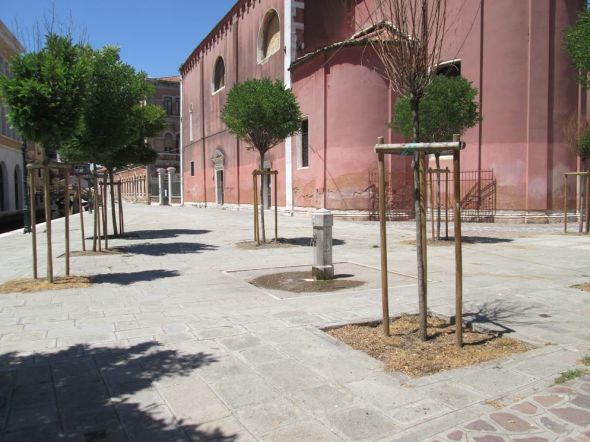
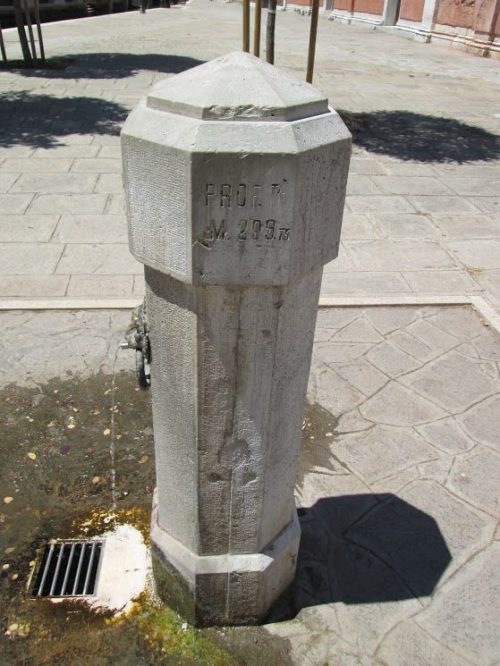

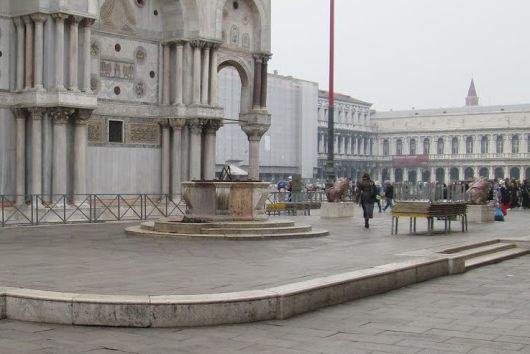
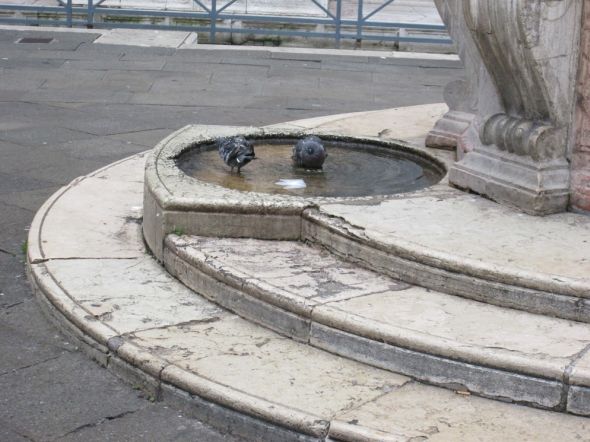


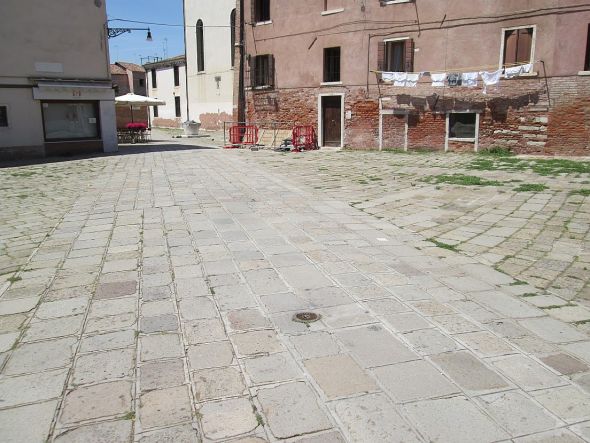

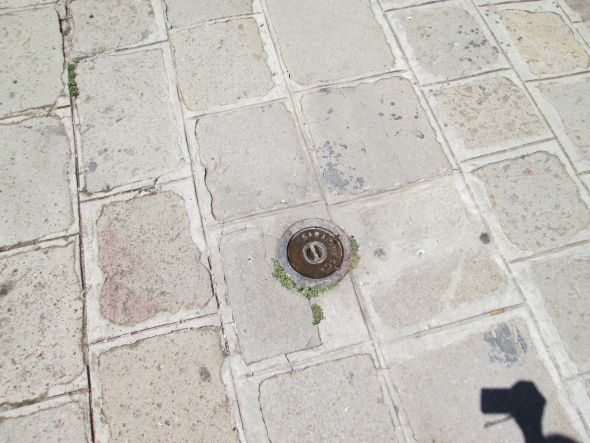
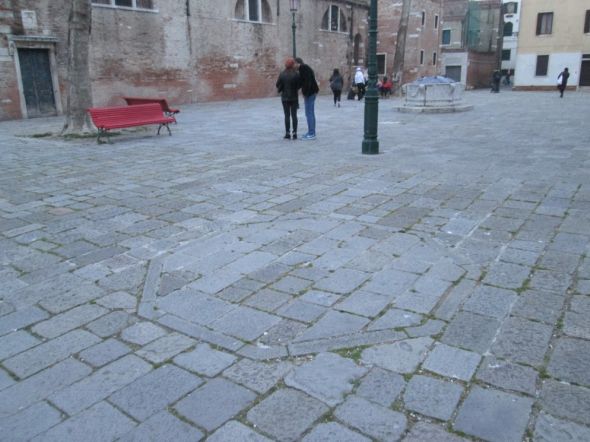
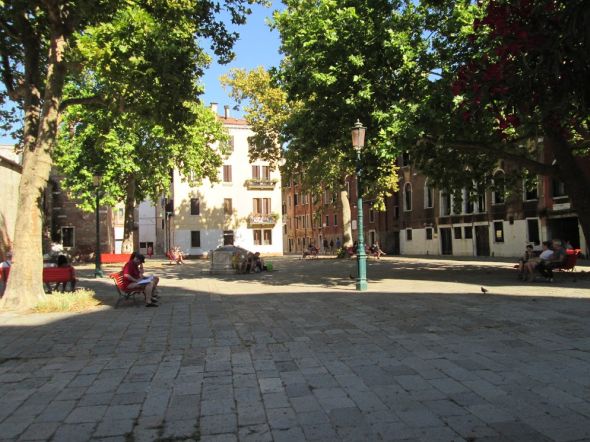
Most of the fountains that we see today around the city running day and night are supplied by the city aqueduct. My next post will reveal the dazzling engineering of the historic — pre-20th century — Venetian aqueduct, but at the moment I want to acknowledge the burbling municipal H2O that has revived countless tourists.


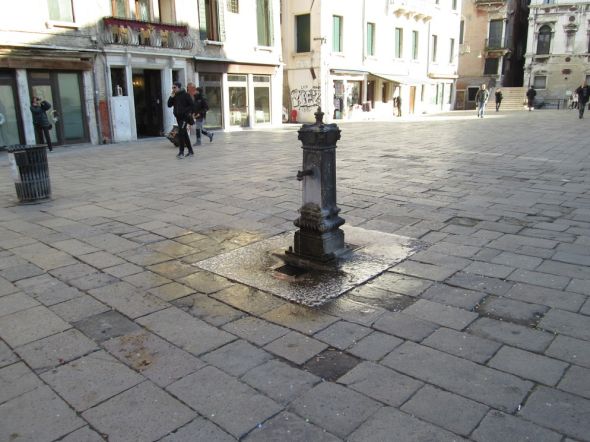
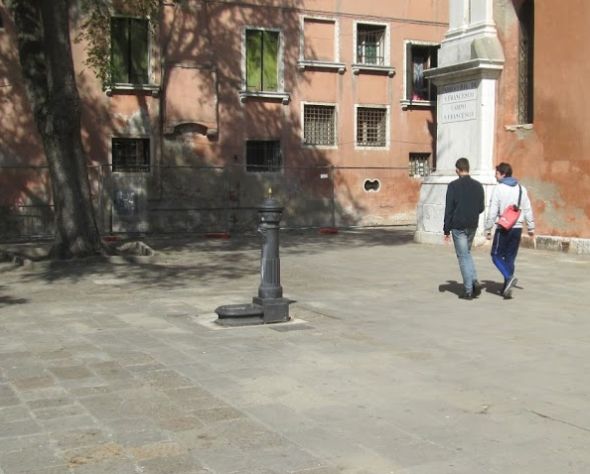
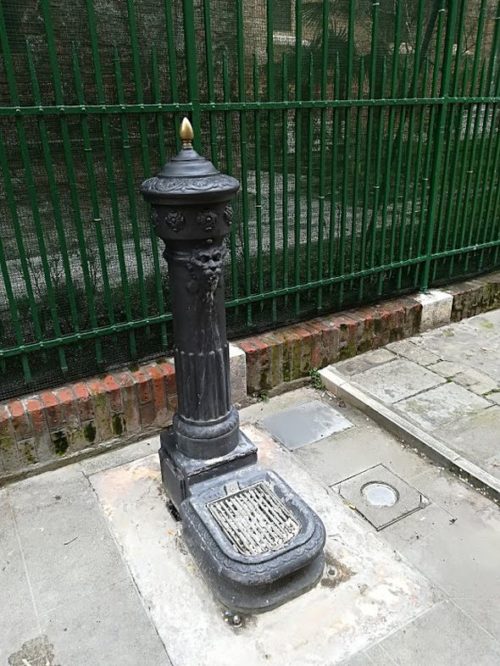
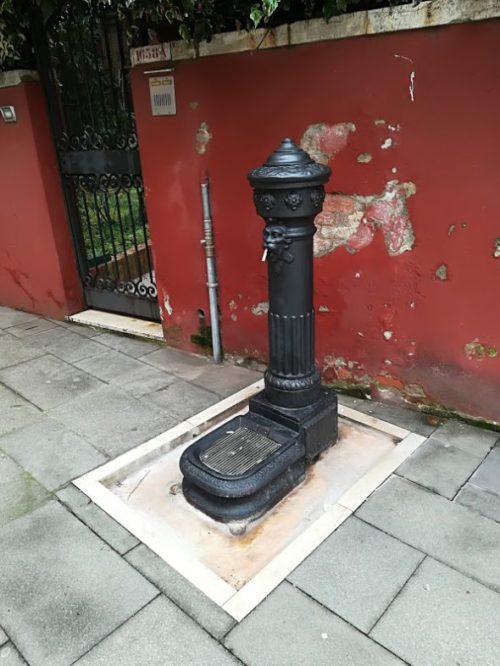
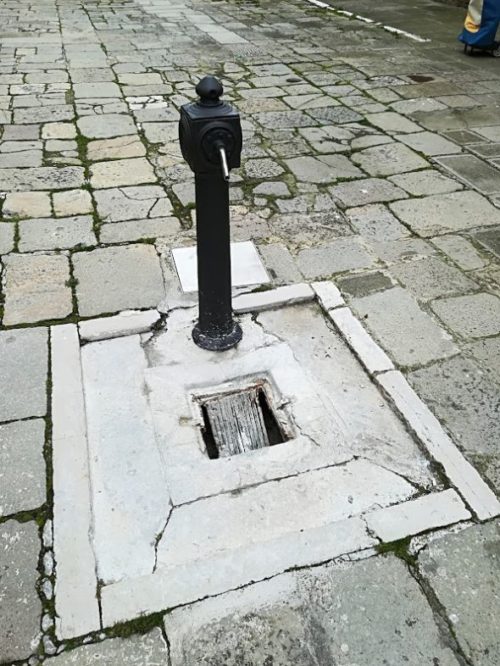
Many people have asked me the obvious question: All that water running all the time, isn’t it a tremendous waste? Veritas, the water company, says that it isn’t. I suppose they would. I haven’t found a contrasting opinion to that, but I have had to suspend more research because life is short.
The logical solution, as people occasionally suggest, is to install faucets so that only the water that’s needed at the moment comes pouring out. Simple? Of course not!
An Italian member of an online political forum, who goes by the name “gava,” wrote (translation by me): “My project to install faucets to eliminate waste of precious drinkable water from the fountains is not easy to realize.
“In Venice there are about 200 fountains which consume about 800 cubic meters of water a day (800,000 liters, or 211,337 US gallons). A considerable amount, there’s no doubt. But let’s think for a moment, the water comes directly from the spring at Scorze’, it has no costs for pumping or purification, they only add some chlorine.
“Furthermore, the installation of a switch would increase the bacterial load in the first stretch of pipe, and the controls made by ASL (the local health department) demonstrate this. Practically speaking, to install faucets would give a tiny economic advantage and many disadvantages, from the maintenance of the pushbuttons (of the faucet) which are subject to frequent breaks, to the presence of bacteria in the first tract of water. (I think he means where the water exits from the faucet, which when the faucet is closed would promote buildup of bacteria.)
“Over the past five years, I’ve seen a maximum of 30 functioning fountains in Venice (note: VeniceWiki has made a map but a quick check shows it is incomplete). Those that have been closed for years may have something more than simple bacteria in the pipes, up to real encrustation. In any case, I still think that the system of filtering and taps could be improved, I don’t want it to be an excuse for throwing water away.”
An unnamed ex-member of this forum replied: “I remember that some time back they started to install pushbuttons but the main problem was that they break really easily, and so a good number of fountains were put back to the old system.”
To complicate matters, Veritas is responsible only for the fountains in the public parks; the others are maintained by “other organs,” which I have not identified. But the fact that all the fountains aren’t managed by the same company means that of course there will be administrative and/or bureaucratic problems involved in any change.
So while we’re all waiting for simplicity and conservation to reign on earth, I suggest you drink the fountain water as much as you can. After all, it’s there for you.